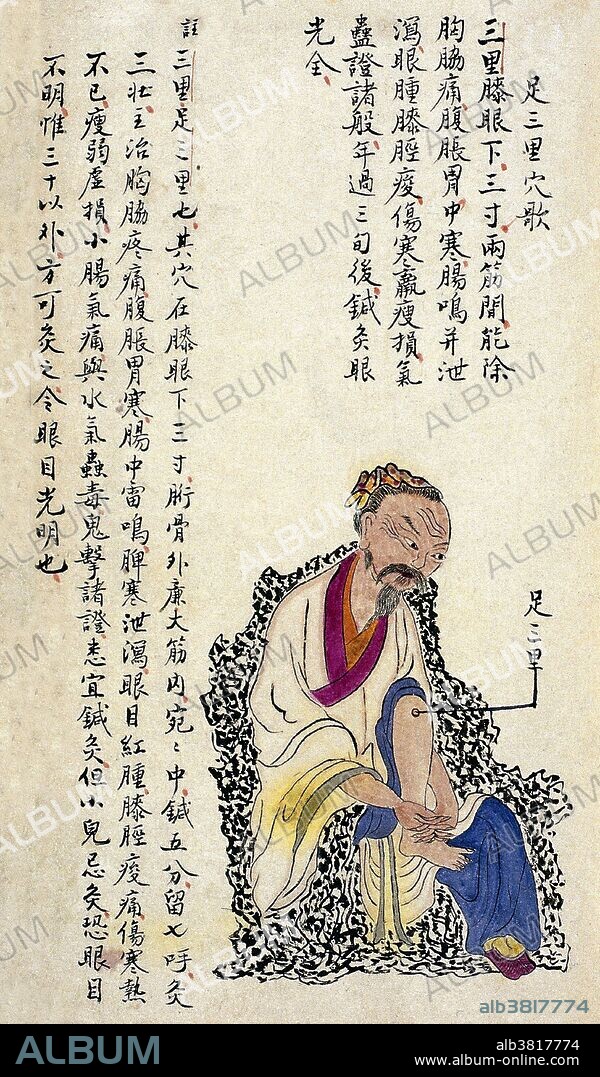alb3817774
Chinese Acu-moxa Point Chart, 1869

|
Zu einem anderen Lightbox hinzufügen |
|
Zu einem anderen Lightbox hinzufügen |



Haben Sie bereits ein Konto? Anmelden
Sie haben kein Konto? Registrieren
Dieses Bild kaufen
Titel:
Chinese Acu-moxa Point Chart, 1869
Untertitel:
Siehe automatische Übersetzung
Acu-moxa point chart, showing the zu san li (Leg Three Miles) point, from Chuanwu lingji lu (Record of Sovereign Teachings), by Zhang Youheng, a treatise on acu-moxa in two volumes. This work survives only in a manuscript draft, completed in 1869 (8th year of the Tongzhi reign period of the Qing dynasty). The text states: The zu san li point is located 3 cun below the the lateral depression of the knee (xiyan, Eye of the Knee), between the two tendons at the outer edge of the tibia. It can be needled to a depth of 5 fen, and moxibusted with three moxa cones. It is indicated for pain in the chest and sides; abdominal distension; diarrhea related to cold in the spleen and stomach; red, swollen eyes; aching knees and shins; frailty and emaciation and insufficiency detriment consequent upon cold damage; gaseous pain in the small intestine; water Qi/oedema (shuiqi) from insect poisoning, etc. Moxibustion of this point is prohibited for child patients, as it may damage the eyes. Only in the case of patients over the age of thirty, moxibustion at zu san li can improve the eyesight.
Bildnachweis:
Album / Science Source / Wellcome Images
Freigaben (Releases):
Model: Nein - Eigentum: Nein
Rechtefragen?
Rechtefragen?
Bildgröße:
2814 x 4800 px | 38.6 MB
Druckgröße:
23.8 x 40.6 cm | 9.4 x 16.0 in (300 dpi)
Schlüsselwörter:
1860ER JAHRE • AKUPUNKTUR • ALTERNATIVE MEDIZIN • BLOCK-DRUCK • CHINESISCHE SCHRIFT • DIAGRAMM • HOLZARBEIT: SCHNITZEREI • ILLUSTRATION • ILLUSTRATIONS • KALLIGRAPHIE • KARTE • MANDSCHU-DYNASTIE • MANN • MOXIBUSTION • QING-DYNASTIE • SCHNITZEREI: HOLZ • SCHRIFT, CHINESISCH • TECHNIK: HOLZSCHNITT • THERAPIE
 Pinterest
Pinterest Twitter
Twitter Facebook
Facebook Link kopieren
Link kopieren Email
Email
